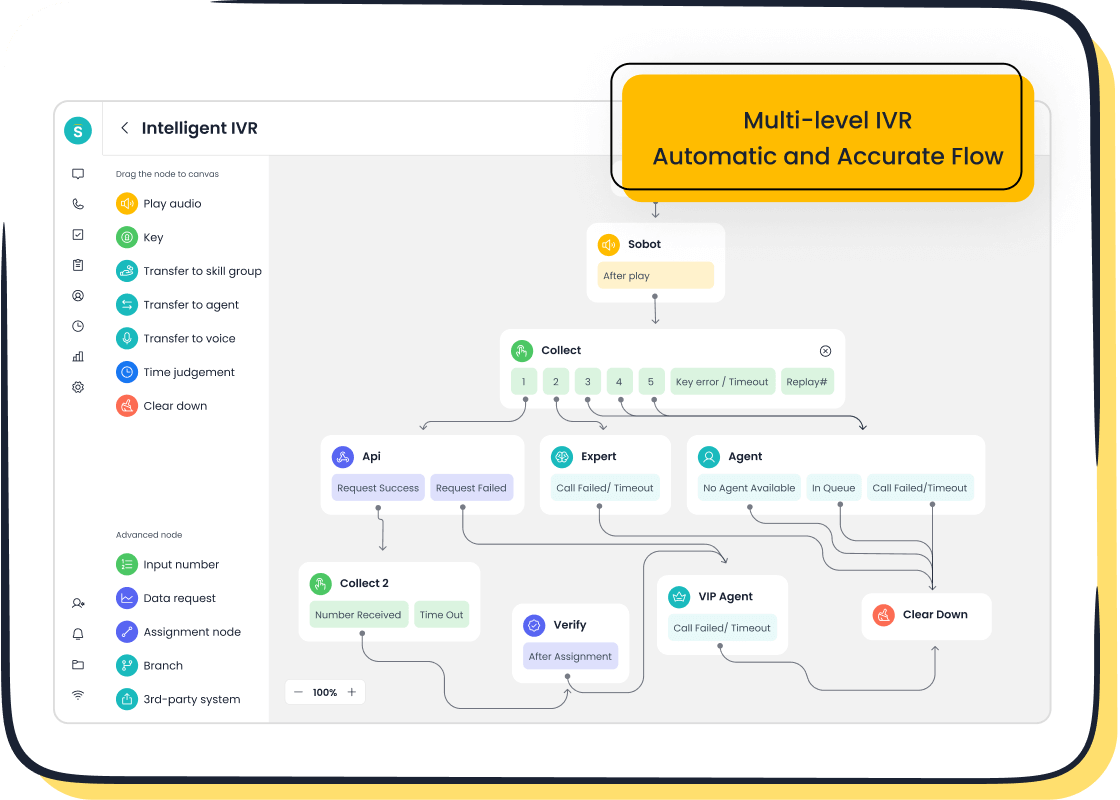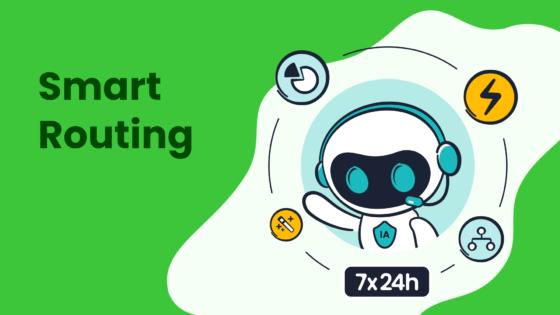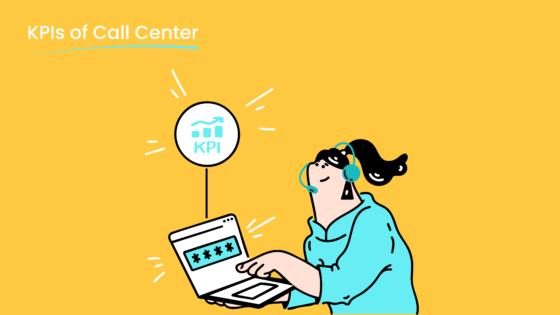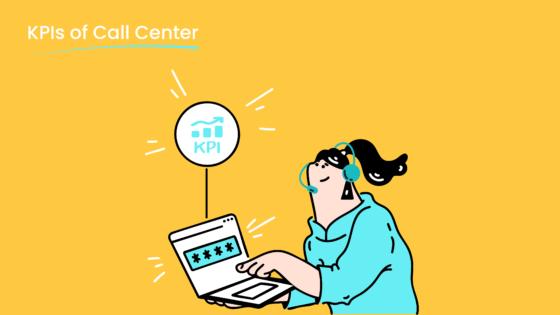Why ASA is a Crucial Metric for Customer Satisfaction

The Average Speed of Answer (ASA) plays a vital role in shaping your customer’s experience. Quick response times not only reduce frustration but also foster trust and loyalty. Studies show that shorter wait times correlate with higher satisfaction, while delays often lead to stress or even call abandonment. In fact, 90% of customers value immediate responses when seeking help. Companies like Sobot, known for their efficient solutions, demonstrate how prioritizing ASA reflects a commitment to customer-centricity. By minimizing wait times, you can create positive impressions and build lasting relationships.
Understanding Average Speed of Answer (ASA)

What is ASA?
Definition and calculation of ASA
The average speed of answer (ASA) measures how quickly a call center agent answers an inbound call. It reflects the total time a caller spends waiting in the queue before connecting with an agent. To calculate ASA, divide the total wait time of all callers by the number of calls handled. For example, if customers collectively wait 500 minutes for 100 calls, the ASA would be 5 minutes. This metric provides valuable insights into the efficiency of your customer service operations.
Common industry benchmarks for ASA
Industry benchmarks for ASA vary depending on the sector. However, most call centers aim for an ASA of 20 to 30 seconds. A lower ASA indicates faster response times, which often leads to higher customer satisfaction. In contrast, an ASA exceeding 60 seconds can frustrate customers and increase the likelihood of call abandonment. Maintaining a competitive ASA ensures your business meets customer expectations and stays ahead in service quality.
ASA as a Key Performance Indicator (KPI)
Why ASA is critical in customer service metrics
ASA serves as a vital performance indicator for customer service teams. It directly impacts customer satisfaction by reducing wait times and improving the overall experience. Shorter ASA times create a positive first impression, while longer delays can lead to dissatisfaction and even lost business. Additionally, ASA helps identify operational inefficiencies, such as staffing shortages or ineffective call routing, enabling you to optimize resources and improve service delivery.
Examples of ASA in call centers and customer support teams

Consider a call center using Sobot's Voice/Call Center solution. With features like intelligent IVR and smart call routing, agents can handle calls more efficiently, reducing ASA significantly. For instance, a retail company using Sobot's platform achieved an ASA of 15 seconds during peak shopping seasons, ensuring customers received timely assistance. This improvement not only enhanced customer satisfaction but also boosted loyalty and repeat purchases.
The Role of ASA in Customer Satisfaction
The Connection Between ASA and Customer Experience
How long wait times lead to customer frustration
Long wait times can quickly frustrate customers, especially when they need immediate assistance. Customers value their time, and delays often create negative perceptions of your service. Studies show that prolonged waiting increases the likelihood of call abandonment, leaving customers dissatisfied. For example, if a customer waits over a minute to connect with an agent, they may feel undervalued. This frustration can lead to negative reviews or even a loss of business. By monitoring ASA, you can identify delays and take steps to reduce them, ensuring a smoother customer experience.
The psychological impact of quick responses on customer trust

Quick responses do more than resolve issues—they build trust. When customers receive prompt assistance, they feel valued and respected. This positive interaction fosters a sense of reliability in your service. Research by HubSpot reveals that 90% of customers consider immediate responses essential for satisfaction. A well-optimized ASA reflects your commitment to meeting these expectations. For instance, using Sobot’s Voice/Call Center with intelligent IVR ensures faster call routing, reducing wait times. This efficiency not only enhances customer experience but also strengthens loyalty.
ASA as a Measure of Service Quality
Perception of professionalism and efficiency

ASA directly influences how customers perceive your service quality. A low ASA signals professionalism and efficiency, showing that your team prioritizes customer needs. Quick response times create a positive first impression, which is crucial in competitive industries. For example, a financial services company using Sobot’s smart call routing achieved an ASA of 20 seconds, impressing clients with their responsiveness. This perception of efficiency can set your business apart from competitors.
How ASA influences customer loyalty and retention
Reducing ASA doesn’t just improve satisfaction—it drives loyalty. Customers are more likely to return when they know they’ll receive timely support. Lower wait times reduce frustration, creating a positive emotional connection. This connection encourages repeat business and long-term relationships. For instance, minimizing ASA during peak seasons can prevent churn and boost retention rates. By leveraging ASA as a key metric, you can ensure your service meets customer expectations, fostering loyalty and trust.
Operational Benefits of Optimizing ASA
Enhancing Team Efficiency with ASA
Identifying bottlenecks in workflows
Optimizing ASA helps you uncover inefficiencies in your workflows. By analyzing ASA data, you can pinpoint delays caused by outdated processes or insufficient staffing. For example, if your call center experiences high ASA during peak hours, it may indicate a need for better scheduling or additional resources. Monitoring ASA also highlights areas where agents struggle, allowing you to provide targeted training. This proactive approach ensures smoother operations and faster responses for your customers.
The role of ASA in resource allocation
ASA serves as a valuable tool for resource planning. It helps you understand when your call center faces the highest demand, enabling you to allocate staff effectively. For instance, if ASA spikes during lunch hours, you can adjust shifts to ensure adequate coverage. This data-driven approach not only reduces wait times but also prevents overstaffing, saving costs while maintaining excellent service quality. A well-optimized ASA ensures your team operates efficiently, meeting customer expectations consistently.
Cost Management and ASA
Balancing ASA with staffing costs
Maintaining a low ASA requires careful cost management. While hiring more agents can reduce wait times, it also increases expenses. By leveraging tools like Sobot’s Voice/Call Center, you can achieve a balance. Features such as intelligent IVR and smart call routing streamline workflows, reducing the need for additional staff. This approach minimizes costs while ensuring your customers receive prompt assistance.
Financial risks of poor ASA, such as customer churn
A high ASA can lead to significant financial losses. Customers who face long wait times often abandon calls, resulting in lost sales and reduced loyalty. Studies show that 61% of customers switch brands after a poor service experience. By optimizing ASA, you can prevent churn and protect your revenue. For example, businesses using Sobot’s real-time monitoring tools have successfully reduced ASA, improving customer retention and satisfaction.
Leveraging Sobot’s Voice/Call Center for ASA Optimization
Features like intelligent IVR and smart call routing
Sobot’s Voice/Call Center offers advanced features to optimize ASA. Intelligent IVR allows you to customize call menus and route customers to the right agents quickly. Smart call routing ensures calls are distributed efficiently, reducing wait times. These tools enhance your call center’s performance, creating a seamless experience for your customers.
Real-time monitoring and analytics for better decision-making
Real-time monitoring and analytics in Sobot’s Voice/Call Center provide actionable insights into your ASA metrics. You can track call volumes, identify peak times, and adjust strategies instantly. This data-driven approach empowers you to make informed decisions, ensuring your call center operates at peak efficiency. By leveraging these tools, you can consistently deliver exceptional service to your customers.
Strategies to Improve Average Speed of Answer

Optimizing Staffing and Scheduling
Using data to predict call volumes
Analyzing historical data helps you predict call volumes accurately. Patterns often emerge during specific times, such as holidays or product launches. By understanding these trends, you can prepare your team for high-demand periods. For instance, if your call center experiences a surge in customer inquiries during weekends, scheduling more agents during these times ensures faster responses. Tools like Sobot’s Voice/Call Center provide real-time analytics, enabling you to monitor call trends and adjust staffing accordingly. This proactive approach minimizes wait times and enhances the customer experience.
Implementing flexible staffing models
Flexible staffing models allow you to adapt to fluctuating call volumes. Part-time agents or on-call staff can fill gaps during peak hours. This strategy ensures your team remains efficient without overstaffing during slower periods. For example, a retail business using Sobot’s smart call routing can allocate resources dynamically, ensuring customers always receive timely assistance. Flexibility in staffing not only reduces ASA but also optimizes operational costs.
Leveraging Technology for Faster Responses
The role of automated systems like IVR and AI-powered Voicebots
Automated systems like IVR and AI-powered Voicebots streamline call handling. These technologies manage routine inquiries, allowing agents to focus on complex issues. Key benefits include:
- IVR systems route calls efficiently, reducing wait times.
- AI Voicebots enhance operational efficiency by handling repetitive tasks.

For example, a financial services company using Sobot’s AI-powered Voicebot improved its ASA by 30%. These tools ensure customers receive prompt and accurate responses, improving their overall experience.
How Sobot’s Voice/Call Center reduces response times
Sobot’s Voice/Call Center offers features like intelligent IVR and smart call routing to optimize ASA. Intelligent IVR customizes call menus, directing customers to the right agent quickly. Smart call routing ensures even distribution of calls, preventing bottlenecks. Real-time monitoring tools provide actionable insights, helping you adjust strategies instantly. These features work together to reduce response times and enhance customer satisfaction.
Training and Empowering Customer Service Teams
Providing agents with tools to resolve issues quickly
Equipping agents with the right tools improves their efficiency. Unified workspaces, like those in Sobot’s Voice/Call Center, consolidate customer information and call data in one place. This setup allows agents to resolve issues faster. For example, an agent handling a billing inquiry can access the customer’s history instantly, reducing resolution time. Providing these tools ensures your team delivers seamless service.
Encouraging a customer-first mindset
A customer-first mindset motivates your team to prioritize customer needs. Training programs that emphasize empathy and active listening improve interactions. For instance, agents trained to handle frustrated customers calmly can turn negative experiences into positive ones. Encouraging this mindset fosters trust and loyalty, ensuring customers feel valued.
Measuring and Monitoring ASA for Continuous Improvement
Tools for Tracking ASA
Call center software and analytics platforms

Tracking ASA effectively requires robust tools. Call center software and analytics platforms provide the foundation for monitoring this critical metric. These tools collect data on call volumes, wait times, and agent performance, offering a comprehensive view of your contact center's efficiency. For example, Sobot's Voice/Call Center includes advanced analytics features that allow you to track ASA in real time. By leveraging such platforms, you can identify patterns, assess performance, and make data-driven decisions to enhance customer satisfaction.
Real-time monitoring dashboards
Real-time monitoring dashboards offer immediate insights into your contact center's operations. These dashboards display live data, such as current ASA, call queue lengths, and agent availability. This visibility enables you to respond quickly to issues, such as unexpected spikes in call volumes. For instance, if your ASA exceeds acceptable limits during peak hours, you can reallocate resources instantly. Tools like Sobot's real-time monitoring ensure you stay proactive, maintaining a seamless experience for your customers.
Setting Realistic ASA Goals
Aligning ASA targets with customer expectations
Setting realistic ASA goals begins with understanding what your customers expect. Research shows that longer wait times often lead to dissatisfaction, while shorter ASA enhances the overall experience. To align with these expectations, consider the following benchmarks:
- Aim for an ASA of 20–30 seconds in most industries.
- Keep ASA below 60 seconds to avoid frustration.
- Strive for lower ASA during peak periods to maintain satisfaction.
These targets ensure your contact center meets customer needs while maintaining operational efficiency.
Benchmarking against industry standards
Industry standards serve as a valuable reference when setting ASA goals. For example, technical support centers often track ASA to comply with service-level agreements. Meeting these benchmarks demonstrates your commitment to quality service. By comparing your ASA with industry averages, you can identify areas for improvement and maintain a competitive edge. Sobot's analytics tools simplify this process, helping you benchmark effectively and adjust strategies as needed.
Using ASA Data to Drive Decisions
Identifying trends and areas for improvement
ASA data reveals trends that can guide your decision-making. For instance, analyzing peak call times helps you allocate resources more effectively. If your ASA increases during lunch hours, it may indicate a need for additional staffing. Similarly, high ASA during specific campaigns could highlight inefficiencies in call routing. By identifying these patterns, you can implement targeted solutions to improve your contact center's performance.
Adjusting strategies based on performance metrics
ASA data plays a crucial role in refining your strategies. It reflects how responsive your contact center is to incoming calls, making it a key metric for operational planning. For example, improving ASA often requires better resource management and strategic planning. By analyzing this data, you can address staffing issues, optimize workflows, and enhance customer satisfaction. Sobot's Voice/Call Center provides actionable insights, enabling you to make informed decisions that drive continuous improvement.
Improving the Average Speed of Answer (ASA) is essential for delivering exceptional service. It enhances customer satisfaction by reducing wait times and fosters loyalty through prompt responses. Operationally, it identifies inefficiencies, enabling better resource allocation. The dual benefits of ASA are clear:
| Aspect | Impact on Customer Satisfaction | Impact on Operational Efficiency |
|---|---|---|
| Average Speed of Answer | Lower wait times enhance experience and loyalty | Identifies staffing issues and peak times |
By leveraging tools like Sobot’s Voice/Call Center, you can optimize ASA effectively. Features such as intelligent IVR and real-time monitoring ensure faster responses and seamless operations. Prioritizing ASA not only satisfies your customer but also strengthens your business performance.
FAQ
What is a good ASA for customer service?
A good ASA typically ranges between 20 to 30 seconds. This benchmark ensures customers receive timely responses, reducing frustration. For example, call centers using Sobot’s Voice/Call Center often achieve an ASA of 15 seconds during peak periods, showcasing exceptional efficiency and customer focus.
How does ASA affect customer satisfaction?
ASA directly impacts satisfaction by reducing wait times. Faster responses create positive experiences, while delays can lead to frustration. Studies show that 90% of customers value immediate assistance. Tools like Sobot’s intelligent IVR help optimize ASA, ensuring customers feel valued and respected.
Can technology improve ASA?
Yes, technology plays a crucial role in improving ASA. Features like AI-powered Voicebots and smart call routing streamline workflows. For instance, Sobot’s Voice/Call Center reduces response times by automating routine tasks, allowing agents to focus on complex issues.
How can you monitor ASA effectively?
You can monitor ASA using real-time dashboards and analytics tools. Platforms like Sobot’s Voice/Call Center provide actionable insights, helping you track call volumes and adjust strategies instantly. This proactive approach ensures your ASA stays within acceptable limits.
Why is ASA important for business success?
ASA reflects your commitment to customer service. A low ASA enhances satisfaction, builds trust, and fosters loyalty. For example, businesses with optimized ASA often see higher retention rates and repeat purchases. Sobot’s solutions help you achieve these outcomes efficiently.
See Also
Enhancing Efficiency With AI-Driven Customer Service Solutions
Essential Insights Into Call Center Quality Assurance Tools
Comparative Analysis of Leading Voice of Customer Tools
Increasing E-commerce Customer Satisfaction Through Chatbot Integration